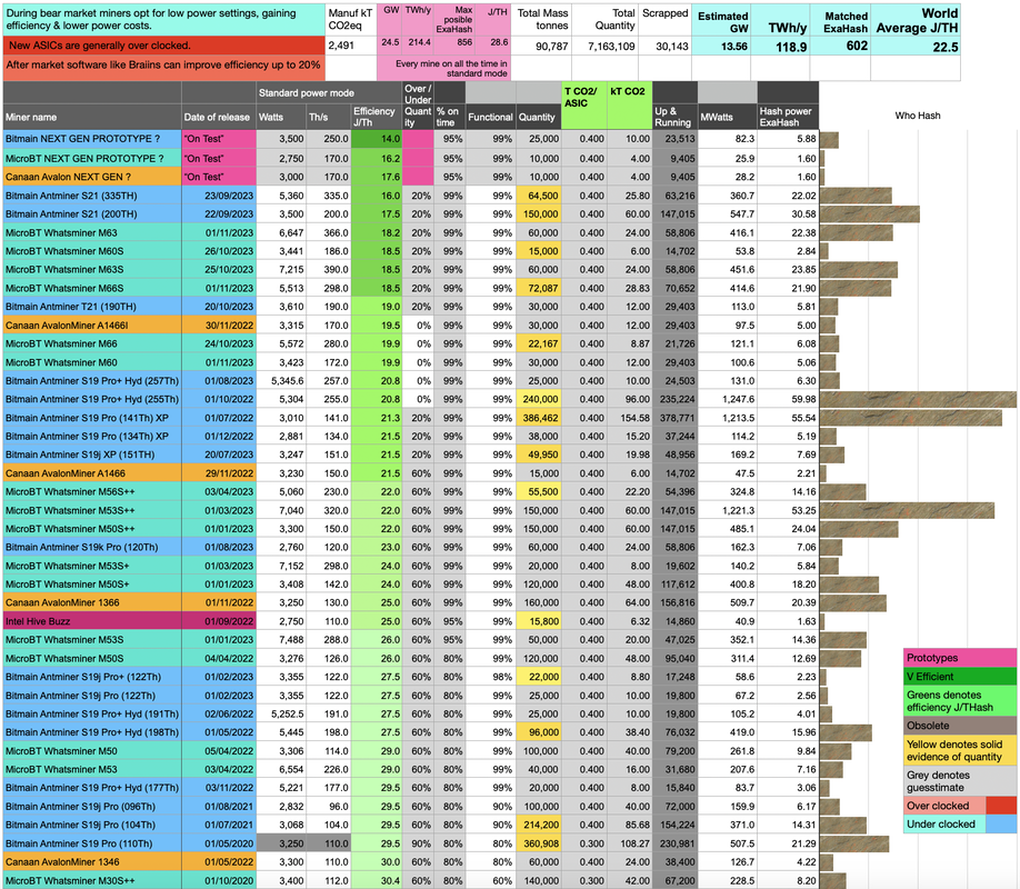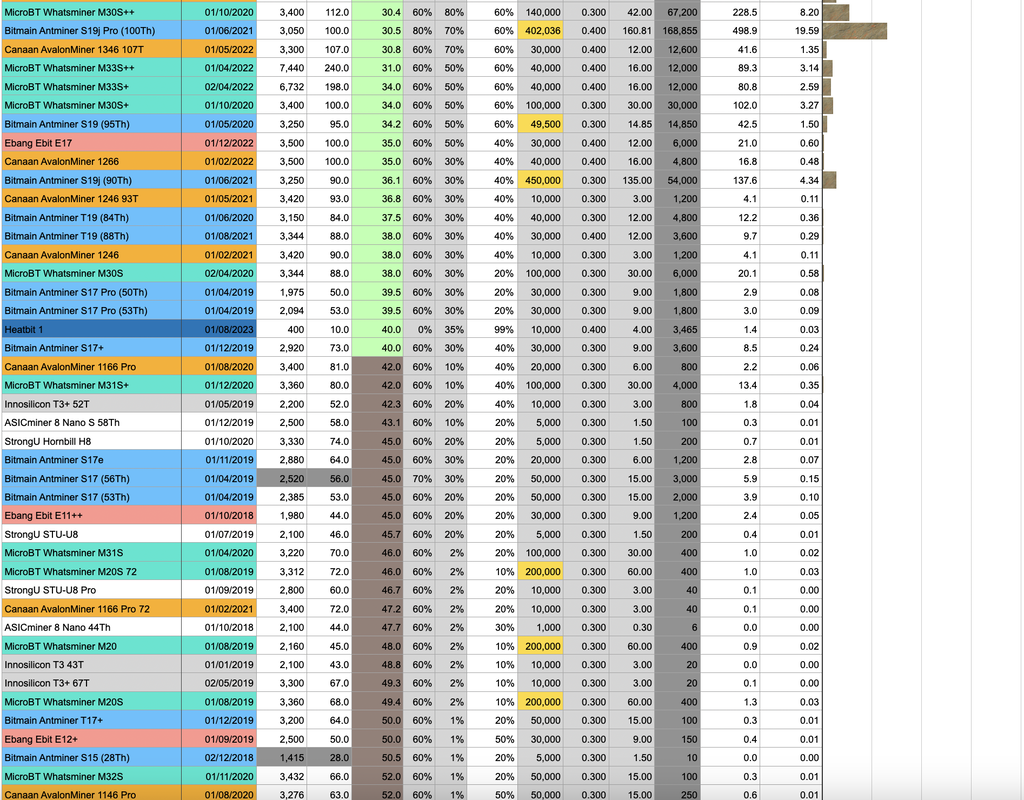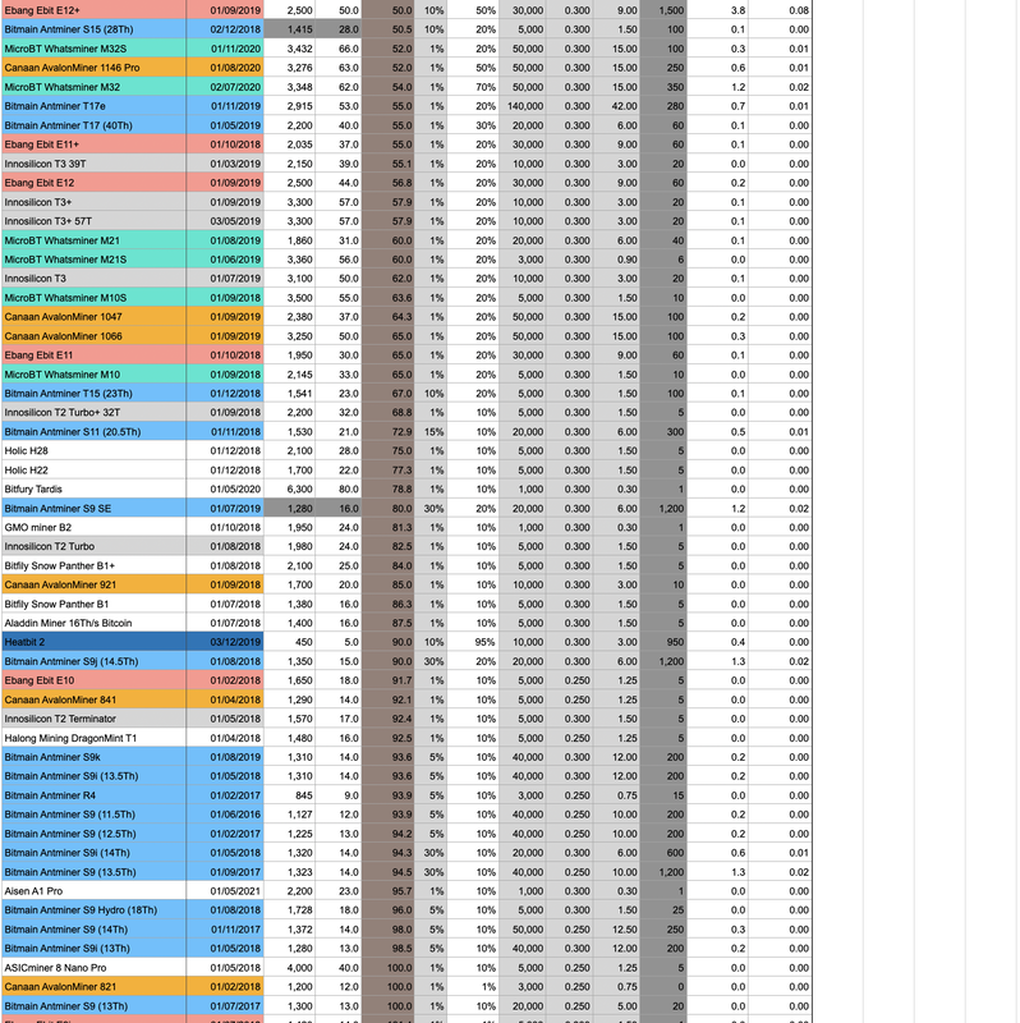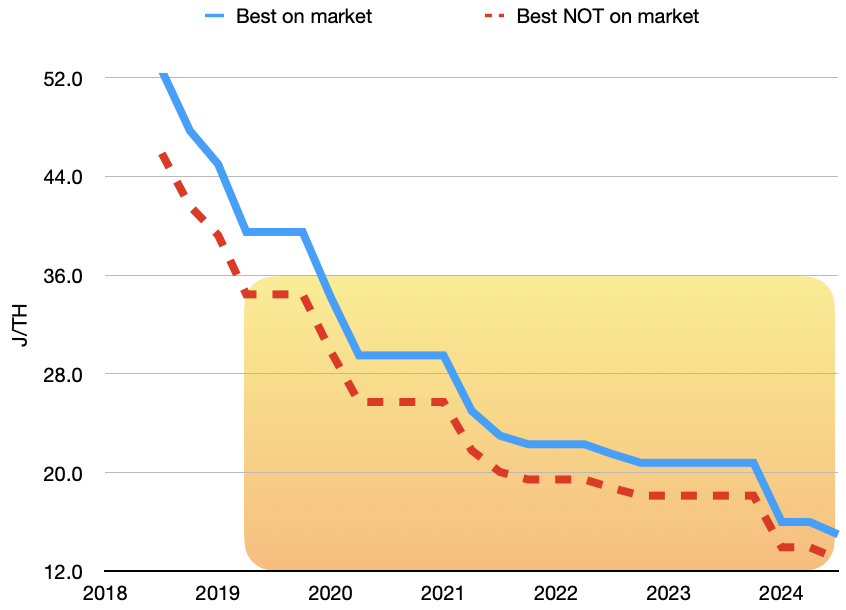World Bitcoin mining average ASIC efficiency
Bitcoin ASIC mining average is ≈ 22.5 J/TH (March 2024)
Here are few methods to Calculate World Average J/TH. If we know this figure, a quick calculation gives us Total World Bitcoin mining power being consumed.
Calculate J/THash - Method A
|
This spread sheet calculates -
|
Mining equipment performance improvements-
|
The green column on is the out of the box advertised efficiency measured in Joules per TeraHash JTH, most efficient at the top. Miners can then alter the software and or use emersion mining methods to improve efficiency or increase Hash rate.
Many miners will just run them standard, others miners may over clock them in an attempt to get a quick return on investment or run them slow & efficient to lower power costs.
Many miners will just run them standard, others miners may over clock them in an attempt to get a quick return on investment or run them slow & efficient to lower power costs.
Key factors
- ASIC Efficiency
- Power consumption
- ASIC Power Mode (High Medium Low)
- After market software such as Braiins can increase efficiency by up to 30%
- Immersion mining can increase efficiency by up to 25% or allow to be over clocked
- Quantity produced - Mostly educated guess but quantities highlighted in yellow have solid evidence (links below)
- Functional percentage - As mines get older they wear out.
- UP time - 10,000 brand new mines in an industrial mining unit would have much more up time say 98% than an amateur using a 5 year old ASIC for heating say 30%
Quantities & up time etc are then tweaked to match the World hash rate. The world Average J/TH can then be calculated & thus Bitcoins overall power consumption.








